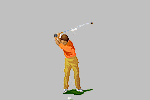



鈴木 石松 (スズキ イシマツ) (Ishimatsu Suzuki)
I am a Taiwanese by birth, also a Japanese by citizenship.
Professor of P. E.
◇担当科目 ◇
•• スポーツと健康科学
•• 基礎演習
•• 体育実技
E-mail: suzuki&gakusen.ac.jp (&を@に変換してください)
Degrees:
Ph. D. Dept. of Public Health, Gifu University School of Medicine, Japan 1999
M.A. Master's Program in Health and Sports Science, University of Tsukuba, Japan 1986
B.A. Dept. of Physical Education, Chukyo University, Japan 1983
B.A. National College of Physical Education and Sports, Taiwan 1978
Main Publications:
*Accuracy of Calorie Counter method to assess daily energy expenditure
and physical activities in athletes and non-athletes. J. Sports Med Phys
Fitness 37:131-136, 1997
*Reliability and validity of a questionnaire for assessment of energy expenditure and physical activity in epidemiological studies. Journal of Epidemiology 8:152-159, 1998
*Cardiovascular fitness, physical activity and selected coronary heart disease risk factors in adults. J. Sports Med Phys Fitness 38:149-157, 1998
*The effects of differing amounts of exercise training on physical fitness and serum lipids in Middle-aged men and women. Adv. Exerc. Sports Physiol. 9: 61-67, 2003
*Fiber type specificity, size, myonuclear number and domain in slow and fast muscles in adult mice. Adv. Exerc. Sports Physiol. 12: 35-43, 2006
A) What our research found with the relationships among cardiovascular fitness, physical activity and coronary heart disease (CHD) risk factors !
It is well known that an active lifestyle protects against CHD, and cardiovascular
fitness is also an independent factor in protection against CHD, too. So,
changes in lifestyle may therefore promote optimal health. However, only
a few studies have investigated the associations of fitness and activity
with the risk of CHD. We conducted a study of 104 Japanese men and 118
Japanese women, measuring their cardiovascular fitness, weekly physical
activity and CHD risk factors. We found that subjects who are physically
fitter and subjects who are more active tend to have both better CHD risk
profiles than subjects who are less fit, and subjects who are less active
in both genders.
B) What we researched with single fibers of slow-twitch (soleus) and fast-twitch (tibialis anterior) muscles of normal adult mice !
During mammalian life, skeletal muscle undergoes several changes, such as an increase in muscle mass from young to adult. As a muscle cell grows and increases it’s cytoplasmic volume the nucleus must maintain mRNA production for the entire area of increased size of cytoplasm. Since muscle cells are multi-nucleic, each nucleus controls mRNA over a finite area or its domain, hence the term myonuclear domain. Firstly, we found that the analysis of myosin heavy chain (MHC) revealed that soleus contained the largest population of MHC I fibers. On the other hand, tibialis had the largest population of MHC Ⅱ. Secondly, the myonuclear numbers of MHC types in soleus occurred in following order, from largest to smallest: type I > I+Ⅱa > Ⅱa, and in tibialis occurred in following order: typeⅡd/x > Ⅱa > Ⅱb. Thirdly, the myonuclear domain in MHC in soleus occurred in following order, from largest to smallest: type I+Ⅱa > Ⅱa > I, and in tibialis occurred in following order: typeⅡb > Ⅱa > Ⅱd/x. Fourthly, we also found that there were significant positive correlations between myonuclear domain and CSA, r = 0.54 in soleus, and r = 0.85 in tibialis. The data suggests that the different type muscles are not only unique in their MHC composition but also have relatively distinct physiological and biochemical properties.